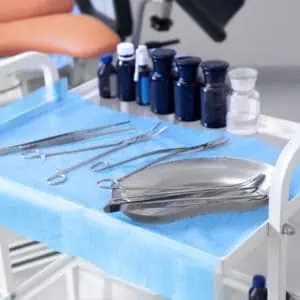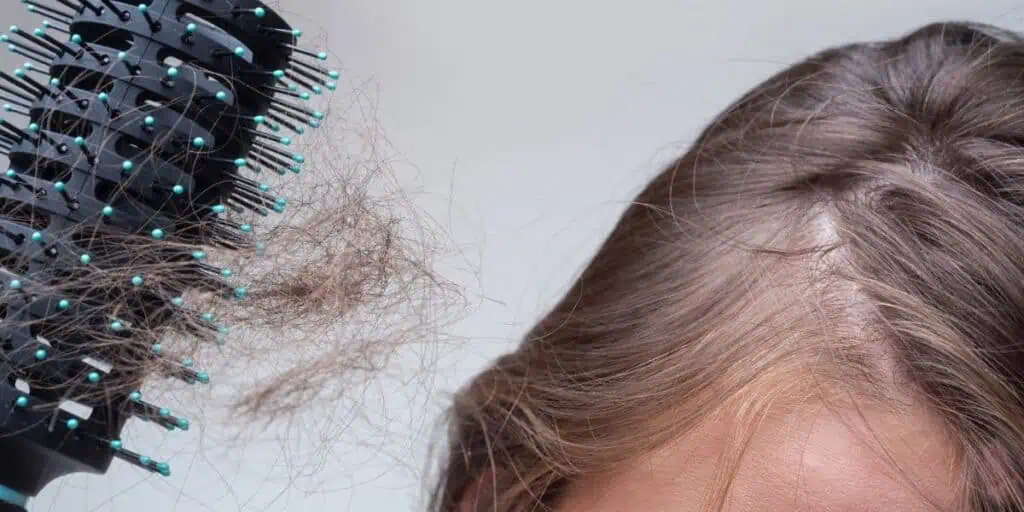What is a dilation and curettage?
There are some instances when it is necessary to remove material from the uterus. To do this, doctors use one of the most common gynecological procedures, dilation and curettage, or D&C. It can be used to diagnose or treat medical conditions of the uterus, like heavy bleeding during a menstrual cycle. Or, it may be necessary to clear pregnancy tissue after a pregnancy loss or abortion.
Dilation and curettage (D&C) is a minor surgical procedure often performed to diagnose or treat a condition involving the uterus. During a D&C, the cervix is dilated, either with drugs or with a surgical instrument. Then, tissue inside the uterus can be cleared out using a special instrument called a curette.
Tissue may need to be collected for diagnosis, usually if an endometrial biopsy for abnormal uterine bleeding or unusual endometrial cells wasn’t sufficient. A D & C procedure can then be performed to check for things such as uterine polyps, fibroids, or uterine cancer.
A D&C can also be used to treat a condition. Instead of removing a tissue sample, additional contents from inside the uterus can be removed. This may be done to treat things such as:
- Infection or heavy bleeding after a miscarriage or abortion
- Bleeding after menopause
- Cervical or uterine polyps or fibroids
- Heavy bleeding due to retained placenta after childbirth
- A tumor as a result of a molar pregnancy
Sometimes, a D&C is performed along with a hysteroscopy. This is when your doctor inserts a very thin light and camera through your vagina and cervix to look into your uterus. Your uterine lining will be visible on a screen, where the doctor can assess the health of your uterus by taking samples and checking for any uterine abnormalities.
D&C preparation
Surgical dilation and curettage may be performed in a hospital, clinic, or doctor’s office. Usually, it’s an outpatient procedure. But you will still want to arrange for someone to take you home after the procedure due to the anesthesia. Additionally, planning for at least a few hours of recovery after the procedure is recommended.
Depending on your case, your doctor may start dilating a day early. A drug called misoprostol (Cytotec) may be prescribed that you can take orally or vaginally. Sometimes, your doctor may insert a slim, absorbent implement made from laminaria into your cervix, which will slowly expand and open your cervix over the day.
What to expect on the day of the procedure

You will receive some form of anesthesia for the procedure. The type of anesthesia administered depends on your medical history and the reasons for your surgery.
General anesthesia makes you unconscious and unable to feel pain. Other forms of anesthesia provide light sedation or use injections to numb only a small area (local anesthesia) or a larger region (regional anesthesia) of your body.
During the procedure:
- You will be asked to lie on your back on an exam table with your feet resting on supports called stirrups.
- An instrument called a speculum will be inserted into your vagina by your doctor, similar to a Pap test, so that they can see your cervix.
- A series of thicker and thicker rods are inserted into your cervix to dilate it slowly until it’s adequately opened.
- Then, the dilation rods can be removed, and a spoon-shaped instrument (curette) with a sharp edge or a suction device can be inserted inside the uterus.
- The curette is used to gently scrape the lining of the uterus (endometrium) and remove or collect tissue samples from the uterine wall.
Due to the sedation or anesthesia, you shouldn’t feel any discomfort.
What is Dilation and curettage recovery?
After the procedure, your doctor may want you to spend a few hours in the recovery room to monitor for complications. You may feel tired from the effects of sedation or anesthesia, and you may not be able to drive.
Common side effects after a D&C include mild cramps and spotting. You may also experience light vaginal bleeding for a few days after the procedure. You may take over-the-counter pain medications that can be used to relieve the pain as instructed by your physician. Avoid putting anything in your vagina (no intercourse or tampons) for at least two weeks after a D&C to prevent infection. Using sanitary pads is recommended for light vaginal bleeding during your recovery.
Most women can return to normal activities within a few days; some feel good enough to return to regular, non-strenuous activity within 24 hours. However, your menstrual period may be late in the month of a D&C since your uterus will have to build up a new lining.
What are the risks of dilation and curettage?

A D&C procedure is safe, but no surgical procedure is without risks. Some complications that may arise during a D&C include:
Cervical damage
Sometimes, the cervix can be torn during the procedure. This may be treated by applying pressure to the cervix or administering stitches to stop the bleeding.
Uterine perforation
If a surgical instrument accidentally punctures a hole in the uterus, the wound will usually heal on its own. However, severe perforations that damage a blood vessel or another organ may need to be surgically treated.
Infection
Surgical instruments are carefully sterilized, but there is always the risk of infection. Call your doctor if you have heavy bleeding, light bleeding that lasts three weeks or more, cramps that last for three days or more, worsening pain, vaginal odor, or a fever.
Scar tissue
Very rarely, a D&C procedure could scar the uterine lining. This is called Asherman’s syndrome and is more common when the D&C is performed after childbirth or miscarriage. Scar tissue on the uterus can sometimes lead to abnormal or painful periods, miscarriages, or infertility concerns in the future.
When can you expect the results of your procedure?
Your healthcare provider will discuss the procedure’s results and provide medical advice after the D&C or at a follow-up appointment.
Why trust Dr. Aliabadi
Dr. Aliabadi isn’t only an expert in obstetrics and gynecology but is knowledgeable in all aspects of women’s health and well-being. Dr. Aliabadi and her caring, supportive staff are available to support you through menopause, childbirth, infertility, routine gynecological care, and procedures like a D&C.
We invite you to establish care with Dr. Aliabadi. Please make an appointment online or call us at (844) 863-6700.
The practice of Dr. Thais Aliabadi and the Outpatient Hysterectomy Center are conveniently located for patients throughout Southern California and the Los Angeles area. We are near Beverly Hills, West Hollywood, Santa Monica, West Los Angeles, Culver City, Hollywood, Venice, Marina del Rey, Malibu, Manhattan Beach, and Downtown Los Angeles.
A D&C procedure usually takes 10 to 30 minutes, depending on the reason for surgery. However, the entire process, including anesthesia and recovery, can take up to five to six hours.
Side effects of dilation and curettage can include spotting or light bleeding. In most cases, these symptoms only last a few days. If you are still experiencing bleeding after two weeks, contact your doctor.
Sources
The American College of Obstetricians and Gynecologists (ACOG)
https://www.acog.org/womens-health/faqs/dilation-and-curettage
National Library of Medicine
https://www.ncbi.nlm.nih.gov/books/NBK568791/
















